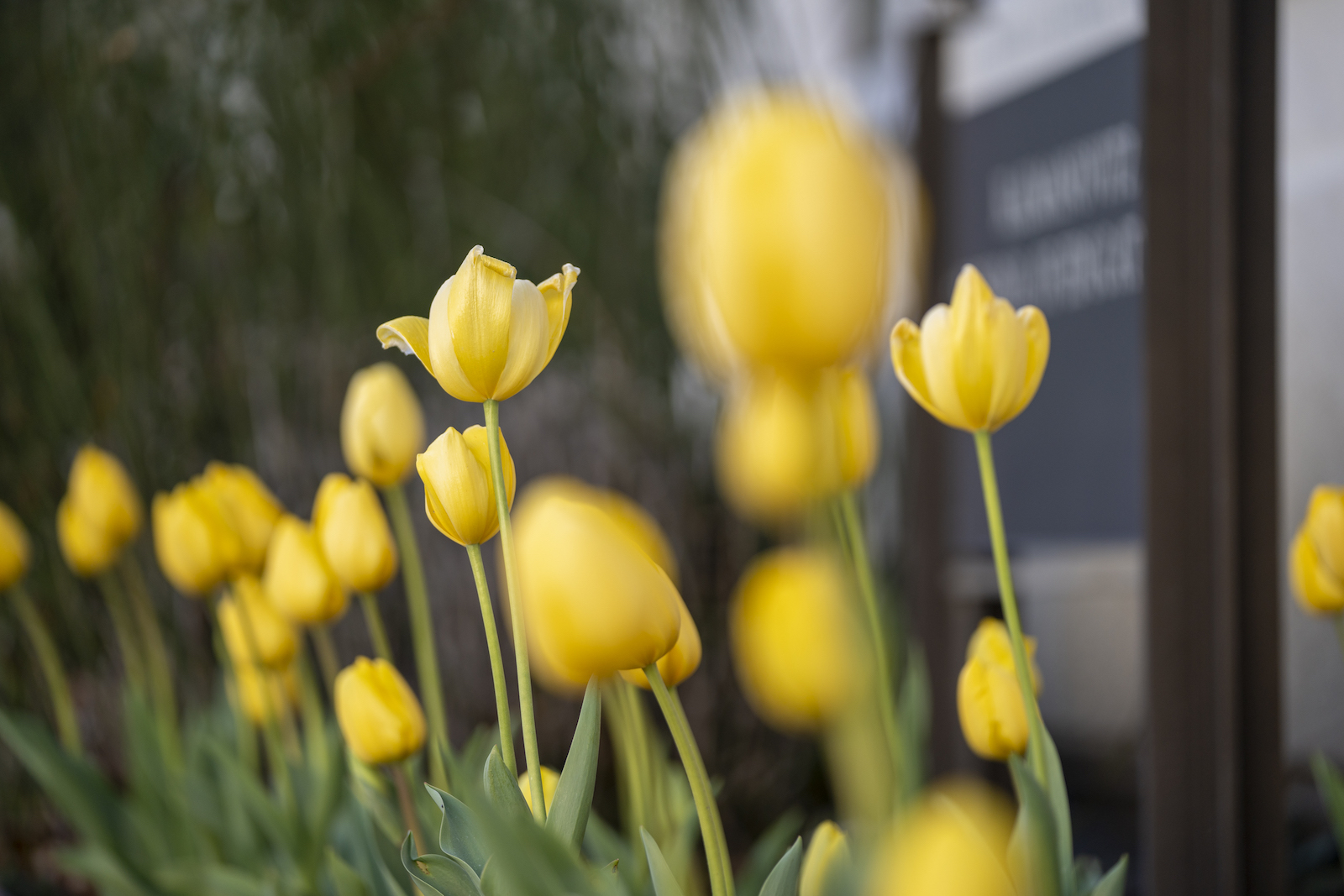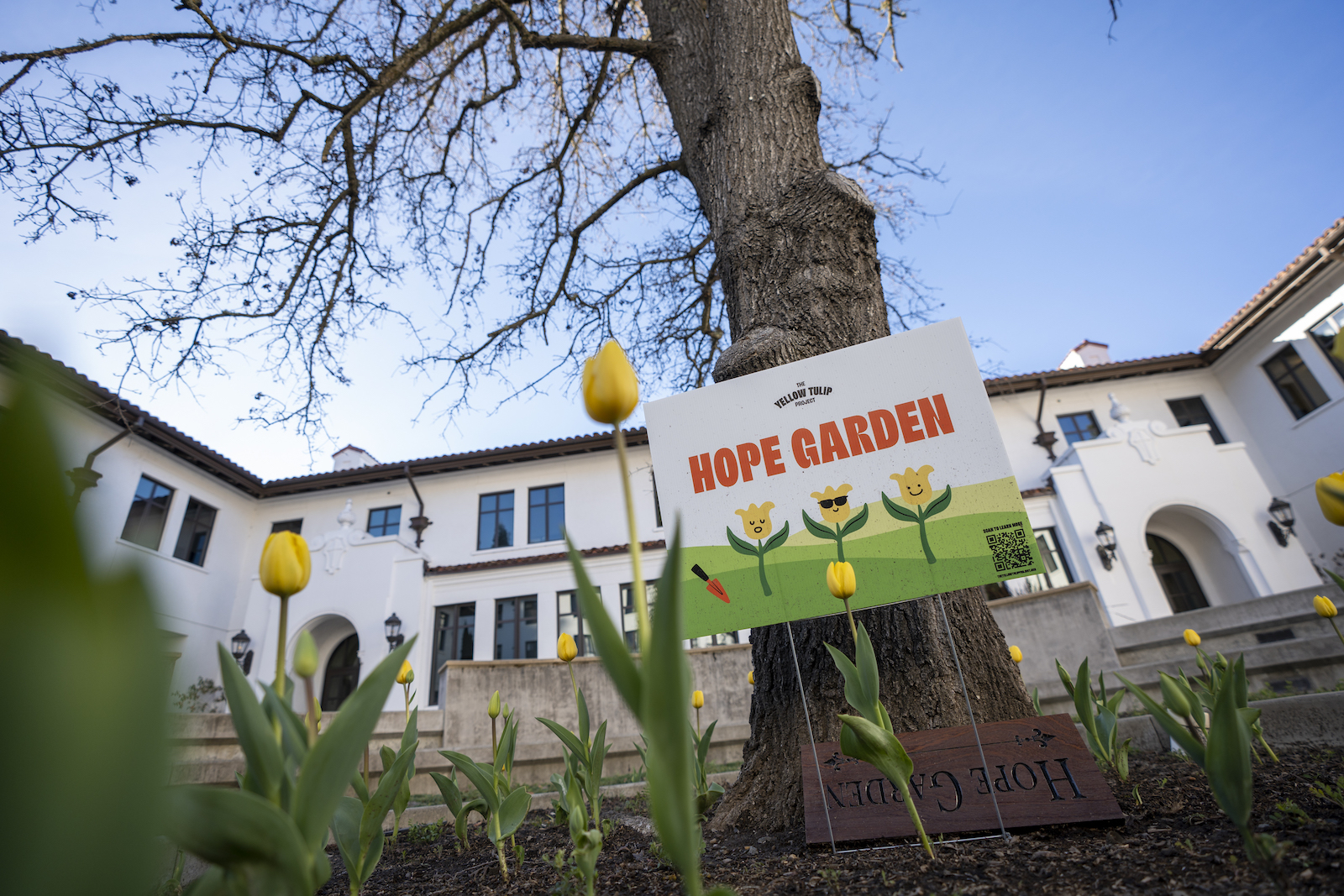
Planting Yellow Tulips to Dismantle the Stigmas Around Mental Health
The blooming of Saint Mary’s Hope Garden brings a new beauty to the place. It is also part of an effort to promote community awareness surrounding mental health—and the importance of caring for one another.
Between Filippi Academic Hall and Augustine Hall on the west side of Saint Mary’s campus lies a courtyard garden just coming into bloom. There are scores of bright green stems pushing up, growing taller by the day, and already dozens of yellow tulips, their cheerful blossoms opening in the sunshine as spring encroaches. This is the birth of Saint Mary’s Hope Garden.
Five hundred bulbs were planted in the garden in October by students, faculty, and staff. These flowers lend a new sense of beauty to the space. They also are part of an undertaking of greater symbolic importance: speaking out about mental health, in a world that often stigmatizes and silences discussions of the subject altogether.
For Saint Mary’s, with a commitment to meeting students where they are and educating the whole person, planting this garden seemed like the right thing to do, says Julie Scaff. Scaff is the Assistant Vice Provost for Student Support Services, as well as the Director of Student Disability Services. Scaff notes that in recent years the number of students with academic accommodations stemming from mental health has increased significantly at colleges across the US. “It’s important for all of us— including faculty and staff at Saint Mary’s—to understand that an increase in outreach is inherently positive,” Scaff says.
The garden is meant to embody the beauty and bravery in speaking out about uncomfortable issues. The garden is also part of a national network that has grown in recent years, through increasing participation in the Yellow Tulip Project. That project was launched in 2016 by Julia Hansen in her home town of Portland, Maine. Hansen was a sophomore in high school when she lost two friends to suicide. She knew the grief she experienced was not unique to her; and she saw first-hand the stigma around discussions of mental health.

At Saint Mary’s, the Hope Garden also serves as a place where one can read, rest, converse, hold a class, sip a cup of coffee. It lies adjacent to the Kalmanovitz School of Education as well as some critical support services for the campus. These include the Counseling and Psychological Services (CAPS), the Health and Wellness Center, the Care Center, and the Campus Assault Response Center, among others. The Hope Garden has also been planted to offer a space that celebrates that mental health discourse is important, natural, and necessary. And the garden is being nurtured with a sense of encouraging students to reach out for help—be it to friends, family, or campus services.
On March 8 at 2 p.m., members of the campus community will come together in the courtyard to celebrate Saint Mary’s inaugural Hope Day with a bloom celebration. Students, faculty, and staff have been invited to place messages of hope in the garden, written on yellow flags alongside the tulips. Expect music and art making as part of the celebration as well.
Dealing with mental health is far too often an exhausting, uphill battle for individuals—but no one has to climb up that mountain alone. The Hope Garden is meant to show that we should celebrate the importance of caring for ourselves and one another, and the power we have to change the conversation surrounding mental health. The Garden is as much about physical beauty as it is about finding light in times of seemingly insurmountable darkness, uncovering the weeds of silence and replanting them with seeds of long-lasting hope for generations to come.
FIND OUT MORE about the Yellow Tulip Bloom Celebration at Saint Mary's.